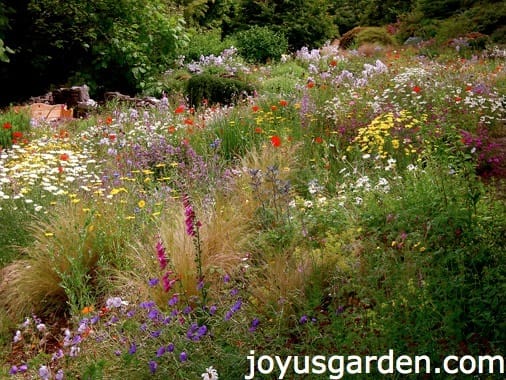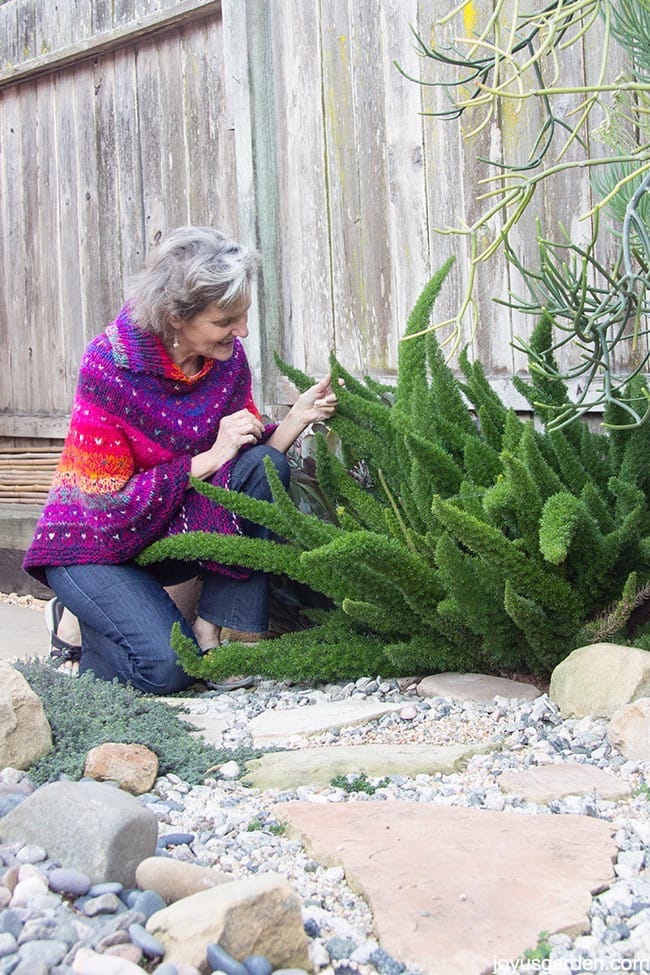Salsa Garden Basics: Grow Salsa The Easy Way
Storebought salsas have their charms. But if you want to get your hands on the tastiest and freshest salsas, growing your own salsa ingredients in a dedicated salsa garden may be for you!
Filled with onions, tomatoes, pepper plants, and more, salsa gardens contain all the herbs and veggies you need to make fresh salsa. They also give you more control over the quality of your salsas, provide you with totally organic and fresh ingredients, and allow you to harvest in bulk for canning season.
For some salsa gardening inspiration, here’s a list of must-have plants, plus design and care tips to help you grow your own salsa garden in a small space or larger garden bed.

The Key Ingredients for Salsa: What to Grow
A well-designed salsa garden should provide you with all the ingredients you need to make a mild or spicy salsa that perfectly suits your tastes. If you love fiery flavors, by all means, grow lots of spicy peppers. But if you prefer milder salsas, you may want to skip the chilis altogether and grow other salsa garden plants instead.
What plants you choose to grow in your own garden will depend on your personal taste and the size of your growing space. But to get you started, here are a few basic ingredients that are right at home in any salsa bed.
- Tomatoes. While you can use any type of tomato to make fresh salsa, the absolute best tomatoes for salsas are paste tomatoes, like ‘San Marzano’ and ‘Roma’ tomatoes. Remember, indeterminate tomatoes will need a tomato cage or trellis, while determinate tomato plants stay more compact and are ideal for small spaces.
- Peppers. Sweet bell peppers are the best choice if you want to make mild salsa. But if you prefer hotter flavors, swap out those sweet peppers for spicy jalapeño peppers, habaneros, or other hot chili peppers!
- Onions. All-purpose, white onions are generally considered to be the best onions for salsa making, but you can grow yellow onions, sweet onions, or green onions for your salsa if you prefer. Red onions make an especially colorful topping for Mexican food and other savory treats.
Aside from the “usual” salsa ingredients, there are other easy-to-grow herbs and veggies that can be used to kick up the flavor of homemade salsa, such as:
- Tomatillos. A close-relative of tomatoes, tomatillos have a bright and tangy flavor and they’re essential ingredients in salsa verde! Just keep in mind that tomatillo plants can grow up to 4 feet tall and they may need a trellis or tomato cage to keep their stems from sprawling.
- Cilantro. A must for cilantro lovers, cilantro plants are small and easy to tuck in between larger tomato and pepper plants. Try succession planting seeds every two to four weeks for a more bountiful harvest.
- Chives. You can use chives instead of onions or sprinkle them on top of your homegrown salsa to add color. For even more flavor, try garlic chives.
- Garlic. Just a few cloves of garlic can take delicious homemade salsas to the next level. These compact plants are great for container gardens, too!
We’ve done a post on vegetable container gardening basics that you should check out if you want to grow your salsa garden in planters.

Planning Your Salsa Garden
Once you’ve selected the plants you want to grow in your salsa garden, it’s just about time to plant. But first you’ll want to choose a good growing location and do a bit of garden planning.
Most vegetable and herb plants grow best in full sunlight and well-drained soil, so you’ll want to choose a level, sunny spot that receives at least six to eight hours of sun daily. A good rule of thumb is to provide plants with as much growing space as possible and to locate tall plants, like tomatoes, towards the back or north side of garden beds so they don’t overshadow lower-growing veggies.
If you don’t have enough room for a full garden, you can also experiment with square foot gardening or grow salsa garden plants in well-draining pots or planters on a sunny porch, patio, or balcony.
Most herb and vegetable plants can be started from seed indoors in spring by planting seeds in trays or pots filled with a seed starting mix. Follow the instructions on your seed packets to plant and keep the planting containers well-watered and under grow lights until you can move the young plants outdoors after the last frost date of spring. Remember to harden your plants off before transplanting, and amend your garden soil with compost to give your transplants an extra nutrient boost.
If you don’t want to start seeds indoors, you can purchase many salsa vegetables and herbs as starter plants from your local garden center. This will allow you to harvest even earlier but may be a bit pricier. While one or two pepper and tomato plants can provide all the salsa ingredients you need for topping tacos, you’ll likely need more plants and a larger garden if you want to make salsa for canning!
A Few Planter Options
Care and Maintenance: How to Keep Your Salsa Garden Thriving
During the growing season, your salsa plants will need to be watered and fertilized regularly. Most food crops do well with about 1 inch of water per week, but it’s always a good idea to feel the soil before watering and to only water when the top 1 inch of earth feels dry. Watering in this way and keeping plants in well-draining pots can help you avoid issues with soggy soil and root rot later on.
Most herbs are light feeders that only need to be fertilized once or twice during the growing season. However, hungry tomato and pepper plants should be fed with a liquid, organic fertilizer every two to four weeks to ensure they produce well. Slow-release, organic, granular fertilizers can also be a great choice, and these products may only need to be applied once or twice per season.
While your plants are growing, keep a watchful eye out for signs of pests or disease and consider using chives and other herbs as pest-repelling companion plants. Stay on top of weeds and harvest veggies and herbs regularly to make your plants even more productive!
Check out the following posts for more info on herb gardening: herb gardening basics, herbs for cooking, herb gardening essentials, & herbs for a tea garden.
A Creative Twist: Salsa Ingredients to Add in for a Unique Flavor
Peppers, tomatoes, and onions are classic salsa ingredients. But if you want to make your own homemade salsa even more unique, try growing these plants and adding them to your recipe!
- Lime and lemon. Citrus plants can be grown outdoors year-round in warm areas, but growers in chillier spots can keep dwarf citrus trees in pots and bring them indoors in winter.
- Other herbs. Herbs like mint, oregano, or garlic scapes can add an intriguing flavor to salsas.
- Fruit. If you have the space to grow fruit trees, you can use homegrown mangoes, pomegranate seeds, peaches, and cherries to add a bright and sweet taste to your salsa. For a small space alternative, try strawberries or pineapple plants.
- Black beans, chickpeas, and other beans. Most bean plants are easy to grow and you can blend them with onions, peppers, and a bit of tomato to make a homemade bean salsa. If you live in a warm climate, you can also grow avocados and stir them in.

Bringing It All Together: Your First Basic Salsa Recipe
You’ve grown a successful salsa garden, harvested the first of your fresh vegetables and herbs, and have your tortilla chips ready for snacking. Now you just need to make salsa…, and this simple pico de gallo recipe is sure to beat any salsa from the grocery store!
What you’ll need:
- 4 large tomatoes, diced
- 1 small onion, diced
- 1 jalapeño, diced
- 1 large handful of cilantro, chopped
- 2 limes, juiced
- ¾ teaspoon sea salt
The process:
Mix the ingredients in a bowl until well combined. Pop the salsa in your fridge for at least 15 minutes to give the flavors some time to develop. Serve it all up with some chips, fajitas, or tacos… you name it!
Conclusion
There’s no better way to celebrate Cinco de Mayo or welcome guests to a party than with a heaping bowl of chips and salsa made from your very own salsa garden. Salsa gardens are so fun and easy to keep that novice gardeners should be able to maintain them with ease. If you love the idea of creating recipe-based gardens like this one, you may also want to explore other themed gardens — like salad gardens brimming with herbs and leafy greens or a pizza garden filled with your favorite pizza toppings.
Happy gardening!
-Lauren
Lauren Landers is a Master Gardener and gardening writer living in Maine. After running a small organic farm in New England for several years, Lauren transitioned to freelance writing and loves helping others discover the beauty of organic and pollinator gardening!
This post may contain affiliate links, you can read our policies here.














